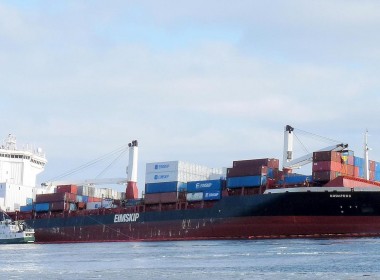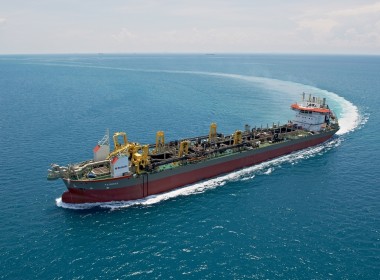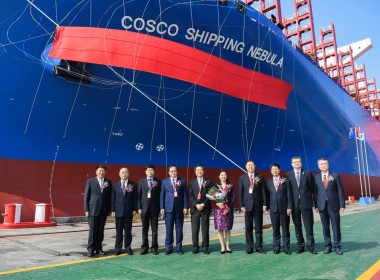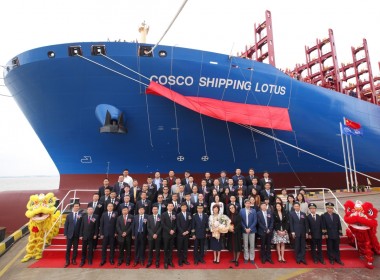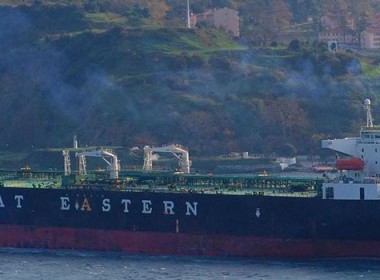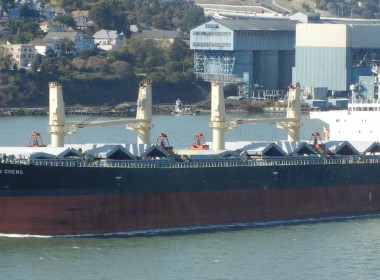INTERVIEW: Sergey Kukushkin – Large shipping companies come to the NSR
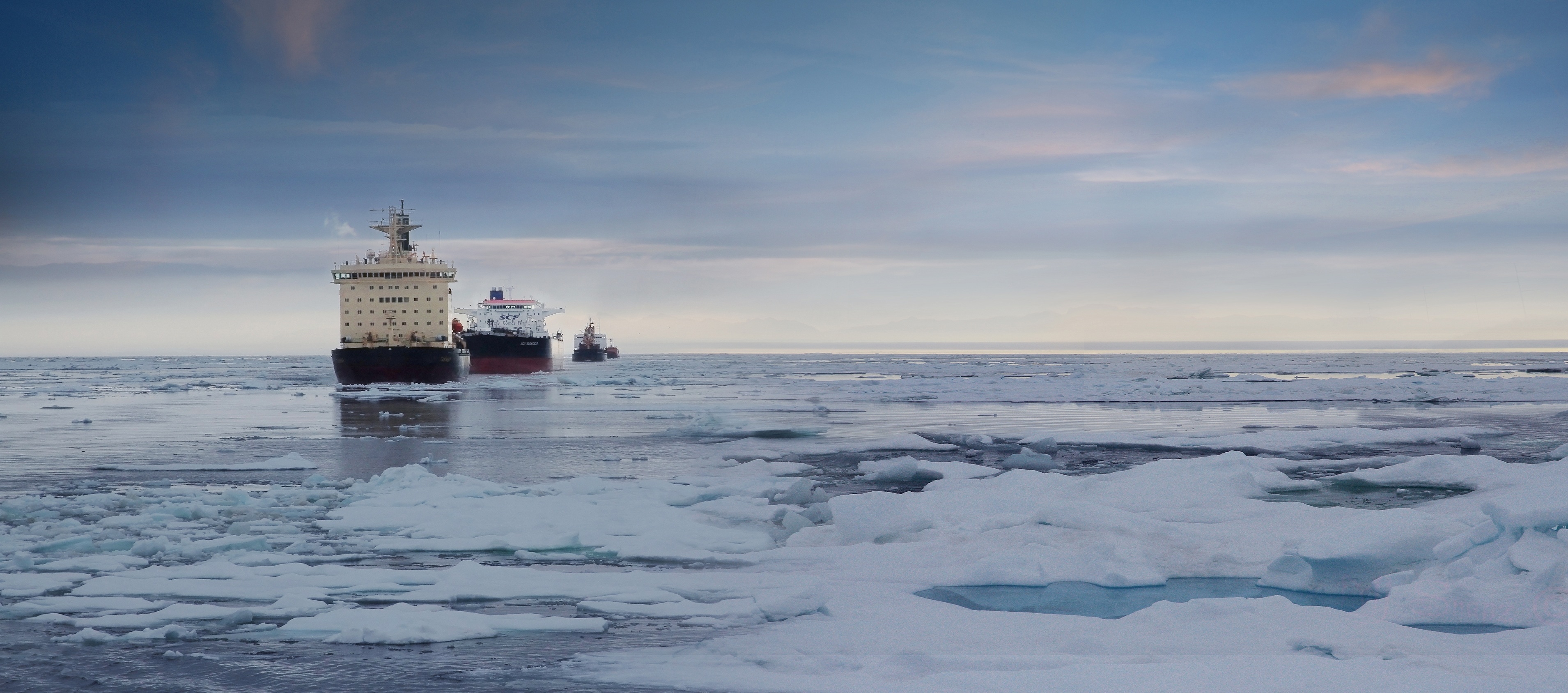
Considerable growth in cargo shipping in the Arctic has been driven this year by the Northern Sea Route (NSR), where new routes for the export of Russian hydrocarbons begin. Large foreign ship owners also use the lanes of the Northern Sea Route. Sergey Kukushkin, Interim Head of the NSR Administration, updates us on the opening of the route and its future.
Mr Kukushkin, as the year of 2017 draws to a close, tell us about the preliminary results of the NSR navigation season.
The year is not over and the Northern Sea Route offers round-the-year navigation. Interim results show that the NSR navigation is generally successful. As of November 1, 2017, cargo traffic on the Northern Sea Route totalled 7,925,861 tonnes and exceeded the annual result of 2016 – 7,265,655 tonnes. That is an 8.3-percent growth, and transit was not taken into account. By November, transportation of transit cargo totalled 194,364 tonnes compared with 214,513 tonnes carried in 2016 and 39,586 tonnes moved in 2015.
Are any ship owners rejected from passing the Northern Sea Route?
Permit-based procedure is established for navigation in the Northern Sea Route water area according to the NSR Navigation Rules approved by Russia’s Ministry of Transport. The number of permit rejections is very low as compared with the number of issued permits. This year, as of November 17, NSR Administration has issued 642 permits and only two notices of rejection. It should be noted that those vessels undertook remedial actions, repeated their requests and obtained the permits for navigation in the NSR waters. Last year saw three rejections with two cases of permit obtaining upon completion of remedial actions.
What are the current and new projects generating the cargo base of the NSR?
Vessels of Norilsk Nickel that enter the Yenisei river have been traditionally making the bulk of the cargo flow. Crude oil produced at Gazprom Neft’s Novoportovskoye field has been going westwards from the Gulf of Ob starting from the last year. Cargoes have been carried under the Northern Delivery programme as well as construction cargo.
The cargo base is expanding with the launching of new projects. In the nearest future, VostokCoal is going to launch the project on transportation of coal from the Malolemberovskoye field. Successful pilot shipments of coal from the Yenisey Bay were performed in the winter navigation of 2016-2017. Eastward cargo shipments are expected for the Ministry of Defense and for construction of berthing facilities at the Port of Pevek where FNTPP Akademik Lomonosov is supposed to be deployed.
The most ambitious Arctic project, Yamal LNG, is about to be launched with LNG shipments from Port of Sabetta. The new port will soon welcome new Yamalmax tankers. Of course, they will be assisted to Sabetta (in the Gulf of Ob) by icebreakers.
Indeed, everybody is looking forward to the first gas shipment from Port of Sabetta. What has been done by the NSR Administration under this project?
Personnel of the NSR Administration have consulted ship owners and operators before a permit for the first gas tanker was requested. Ship owners were familiarised with the requirements related to vessels and crews, NSR Navigation Rules were explained in details. Thus, all ship owners and operators of gas carriers who applied were provided with permits for navigation in the NSR waters.
What is the share of diesel-electric icebreakers involved in the NSR escorts? How many vessels have made unescorted voyages?
Icebreaker assistance in the water area of the Northern Sea Route is provided by both nuclear-powered and Far East icebreakers.
Nuclear-powered icebreakers escort vessels to the Gulf of Ob, towards Port of Sabetta in the Kamenny Cape. If necessary, nuclear-powered icebreakers can provide assistance in the eastern part of the NSR waters. For example, between December 2016 and January 2017 icebreaker 50 Let Pobedy escorted two vessels from east to west.
The fleet of nuclear-powered icebreakers is also in charge of the canal maintenance in the Yenisey Bay to ensure commercially reasonable speed of Norilsk Nickel fleet.
Diesel-electric are also highly loaded. In winter, the Dudinka operates at the port bearing the same name. Some icebreakers of FSUE Rosmorport operate at Port of Sabetta in winter season. The Admiral Makarov and the Krasin icebreakers are on duty in the eastern part of the Northern Sea Route, at the Port of Pevek. When necessary, they escort vessels in the area.
Independent navigation of ice-class ships is only possible in the summer season when the area of Arctic ice is the lowest. In winter, navigation without icebreakers is almost impossible. Icebreaker services are needed even for the most sophisticated vessels with the highest ice class.
The Polar Code has been in force for almost a year. Are there any comments or recommendations for ship owners in this respect?
I would remind that as of January 1, 2017 the requirements of the Polar Code regarding maritime safety became mandatory for new ships built on or after that date. Ships built before that date are to be brought in line with the requirements by 2018. In this respect, Russian Ministry of Transport amended the NSR Navigation Rules accordingly.
Now, to obtain a permit for navigation in the NSR waters, the documents required by the NSR Administration are to be supplemented with a Polar Ship Certificate. Having promptly informed the ship owners the NSR Administration continues explaining new requirements for the interested entities.
This year has seen the first NSR transit from China to Europe made by a COSCO ship. What is your opinion about this operation? Are there applications from large shipping companies for passing the NSR?
Actually, the first ship to transit the Northern Sea Route was Yong Sheng of Cosco Shipping which sailed from the Port of Taicang (China) to the Port of Rotterdam (the Netherlands) back in 2013. The ship was escorted by nuclear-powered icebreaker 50 Let Pobedy. Having appreciated the advantages of the NSR, COSCO has been using this Arctic route almost every year since that time. And this use is gaining momentum which brings positive results in terms of NSR transit volumes.
Other large shipping companies come to the lanes of the Northern Sea Route. For example, Maersk has moved from something in mind to something in kind. During their visit to our office this November, Maersk representatives were thoroughly consulted through the rules of navigation in the Northern Sea Route waters as well as the permit obtaining procedure. The company is planning a pilot transit in the summer navigation period of 2018. It can be a container carrier of more than 3,000 TEUs in capacity.
In November, the NSR Administration was also visited by a representative of Oldendorff Carriers. It is one of the world’s largest dry bulk shipping companies operating 600 vessels. I would emphasise that the company has an experience of passing the NSR. In summer 2016, two vessels of this company delivered 70,000 tonnes of coal each from Canada to Finland. Besides, we are in active partnership with Sovcomflot, Gazprom Neft, Norilsk Nickel, Dynagas, Jan De Nul, Hansa Heavy Lift.
Are there any improvements of the navigational support on the NSR?
As of today, the package of marine charts covering the Northern Sea Route water area numbers 680 charts. However, sailing through the shipping lanes with the best navigational conditions is limited by the depth of the Sannikov Strait (12.8 metres minimum on the recommended lanes). To ensure passage of large capacity vessels with larger draught it was necessary to perform hydrographic survey and development of new deepwater lanes north of the Anjou islands as required by S-44 of the International Hydrographic Organisation. Now, there is a deepwater lane available there for heavy draught ships.
Surveying works have been also performed this year at the Yenisey and Kolyma rivers as well as at the approaches to the Gulf of Ob in order to ensure safe navigation of vessels taking into consideration the traffic growth.
Modernisation of the navigation infrastructure is underway in the water area of the Northern Sea Route. For example, aids to navigation were earlier powered by radioisotope thermoelectric generators (RTG), which was not good for environment. By the end of 2015, all RTGs were taken out of the islands and coasts of Russia’s Arctic seas. As of today, aids to navigation are powered by energy produced by wind, sun and new generation batteries developed in compliance with the tough environmental requirements.
What about the development of search and rescue centres along the NSR lanes?
A Rescue and Coordination Center has been operating for several years at Port Dikson with its branches located at Tiksi and Pevek. The Dikson Center is operating round the year with those at Tiksi and Pevek being seasonal sub-centers. All the locations are equipped with oil spill response facilities: skimmers, booms and motor boats. Similar equipment is available at the Vaygach and Krasin icebreakers.
Search and rescue fleet is being permanently upgraded with the construction of multi-functional rescue ships including ice class vessels. In particular, icebreaker Baltika outfitted with emergency equipment is on a round-the-year duty at the Kamenny Cape terminal.
According to recent media statements, the NSR control can be possibly handed over to a dedicated division of Rosatom. Do you think that would be efficient for the development of the Northern Sea Route?
The NSR Administration received no orders of that kind. As far as I know, the Ministry of Transport was instructed by the President to develop proposals in this respect.
I am sure that in any scenario transport is an instrument of the entire region development and its efficiency will depend on the management competence.
Nadezhda Malysheva


